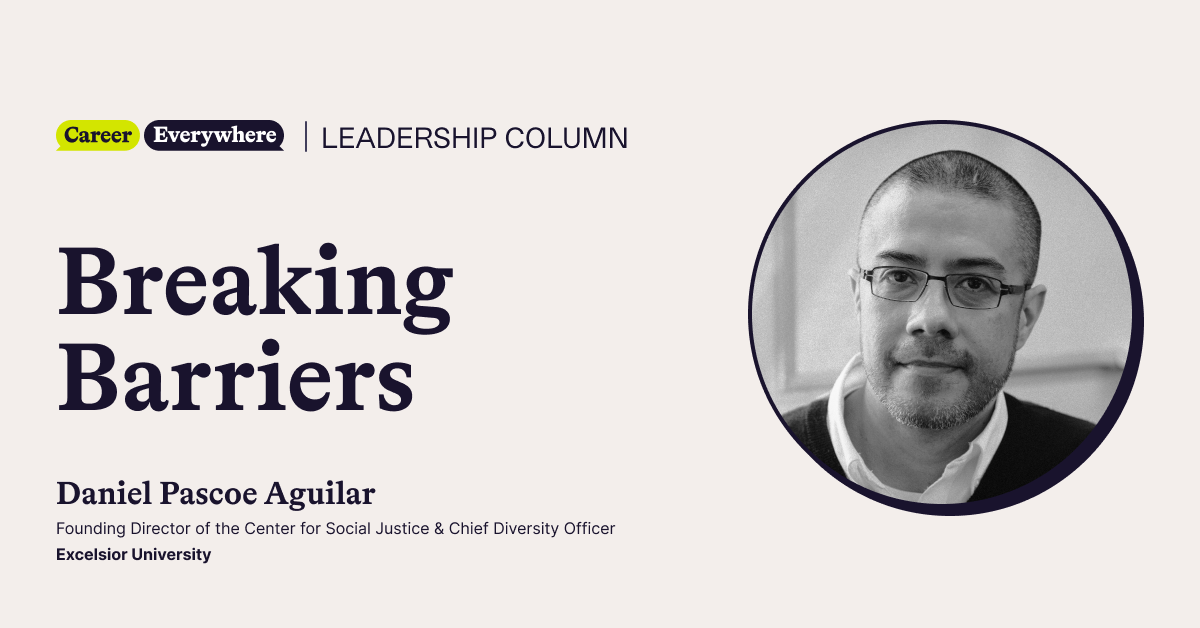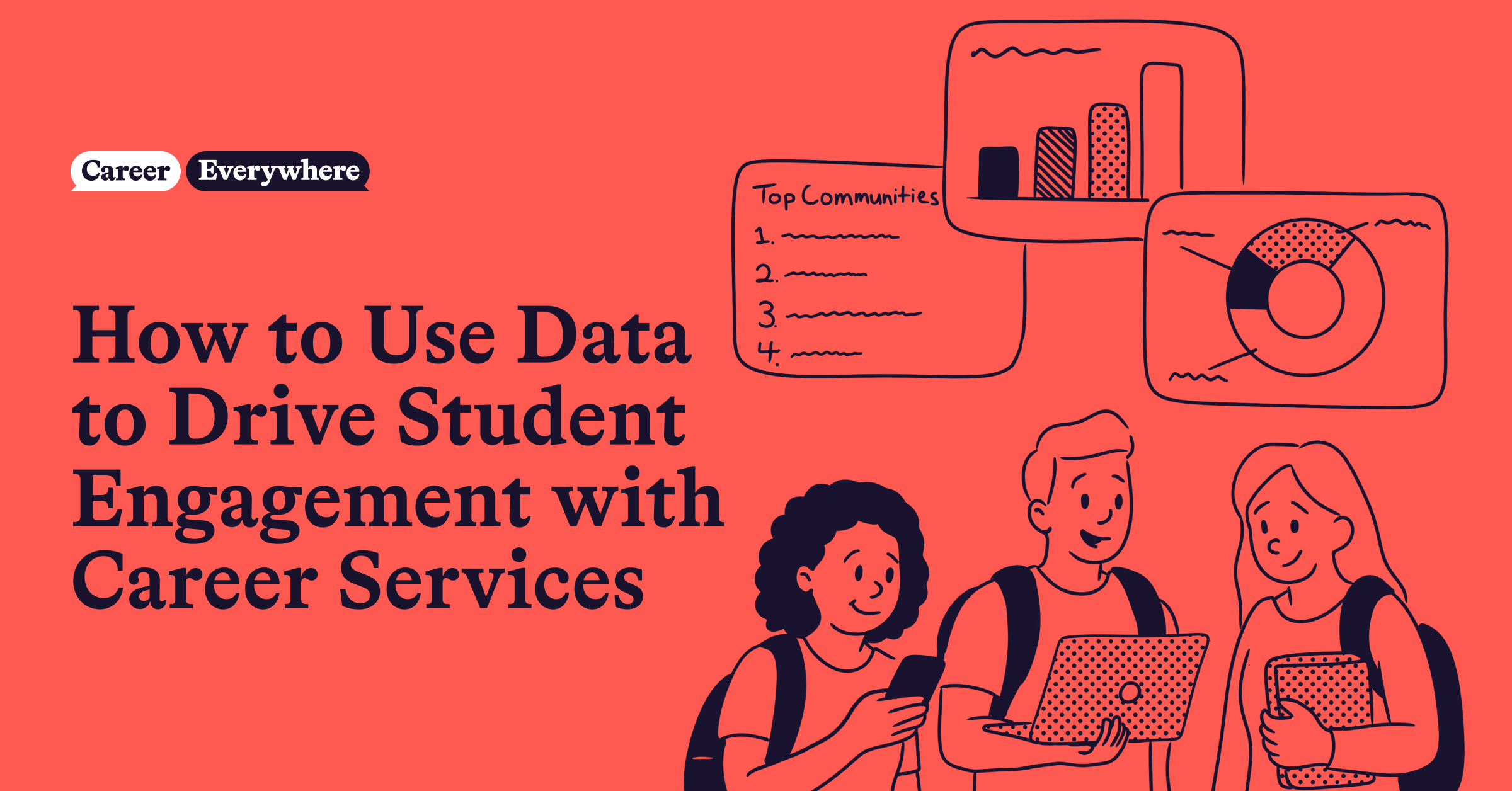
Welcome to Breaking Barriers, a biweekly leadership column for career services professionals. Featuring insights, advice, and inspiration on preparing the next generation of diverse leaders from Daniel Pascoe Aguilar, a 20-year leader in career services and higher education.
My last two columns discussed the importance of leading systemically through our emphasis on empathy, collective definition, and collective ideation as critical phases of the design thinking process. Research and intuition are clear that valuing and leveraging the diversity of experiences, perspectives, ideas, and skills around us enhances the effectiveness of our efforts. So harnessing our collective, diverse intelligence should not only be a moral responsibility but also a strategy for the richness, interdisciplinarity, and quality of our work.
The design thinking process continues with two key practices sometimes dismissed as inevitable or defined under traditional design concepts: Prototyping and testing.
The prototyping and testing phases can be culturally transformative as they offer a powerful alternative to the common ADDIE (analysis, design, development, implementation, evaluation) model of implementation and evaluation. In my leadership experience, one of the most important and challenging aspects of leading systemically and inclusively—both as a moral responsibility and as an effective strategy—is the facilitation of a process that engages all voices in an inclusive and sustainable way.
First, leadership’s organic openness to different voices and perspectives, particularly those with which we disagree or those we find difficult to understand, is seldom found in human systems. And even when leaders value the diversity of their environment, their elicitation of its different perspectives is usually challenging. How do we elicit the voices of all stakeholder groups in our ecosystems without stagnating operations, decision-making, or innovation or without appearing dismissive of the voices we cannot integrate into our solutions?
Prototyping and testing facilitate two powerful modi operandi that could be key to a culture of inclusive problem-solving and innovation.
The first one is the understanding that what we do and the solutions and innovation we pursue must not be static; they need to be dynamic. I don’t think I need to argue the ever-evolving nature and diversity of our student bodies and our higher education human systems, and if we have learned something from the past few years, it’s that the state of our field is constantly changing and unlikely to stop evolving. How could we assume that the solutions or innovation we design or implement could be effective or sustainable if we consider them permanent or long-term? If our students, ecosystems, market, and field are constantly developing, our solutions must be short-term by design, and they should be created for the purpose of testing them for their constant review, improvement, or substitution.
Effective prototyping and testing require each prototype to include criteria and a timeline for its assessment. And per our discussion above and in previous columns, prototyping and testing strongly benefit from incorporating the diversity of experiences, perspectives, ideas, and skills present in the ecosystem. Imagine an organizational scenario in which, when a problem needs to be solved or when innovation is pursued, the strategy is prototyped under inclusive and explicit criteria and for a publicly known period of time. Throughout and at the end of this period of time, the strategy is assessed based on the inclusively identified criteria for either replication, modification, or replacement of a new prototype.
This approach, particularly if followed by the empathy and collective definition and ideation phases discussed in previous columns, provides the diversity of members in the system with two powerful opportunities and assurances:
- The strategy will be as effective as the collective and diverse intelligence of the system, making it the best at the moment and one designed for its timely correction, adaptation, improvement, or replacement as necessary—thus maximizing its quality and accuracy.
- The strategy will consider the diverse input shared in its collective definition and ideation (including its testing criteria) in a way that, even though not all input can possibly be incorporated into the prototype, all voices remain at the decision-making table to be resurfaced and reconsidered as the testing criteria are assessed at the predetermined time. This scenario contrasts sharply with eliciting the diversity of perspectives and ideas in the system but ending in a long-term or permanent strategy that could only afford to include some of the input shared by stakeholders, leaving many feeling unheard and likely disconnected from the solution.
An example of this is the hundreds of career courses I have had the opportunity to chair, co-design, and co-instruct at different universities in the U.S. In each of these experiences, I have been privileged to collaborate with a diversity of amazing career and academic professionals who have brought interdisciplinary, instrumental, and transformative perspectives, experience, ideas, and skills to the table as we attempted to facilitate the vocational exploration and professional development of thousands of members of our next generation of leaders.
The semesterly or quarterly cadence of these learning experiences and environments lend themselves to the opportunity and need to see our curricula and instruction as rapid prototypes to be tested every term and year for their improvement, replacement, or replication. Inevitably, our prototyping and testing needed to be based on the evolving nature of the student body, current academic demands, priorities of student life, institutional challenges and opportunities at the time, availability of support networks, labor market trends, diversity and dynamics of our team, etc.
These collaborative leadership experiences have shown me the power of prototyping and testing to leverage our collective, interdisciplinary intelligence and make our curricula and instruction the best at the moment, designed for timely correction, adaptation, improvement, or replacement as needed and effectively maximizing their quality and accuracy. Our prototyping and testing approach also allowed each of us to understand that, even though not all input could be incorporated into our curricula and instruction each term or year, all voices remained at the decision-making table, to be resurfaced and reconsidered as we assessed the testing criteria we had collectively predetermined and scheduled. Each of these experiences has been such a powerful learning opportunity for me, for us, for our students, and for our systems. It’s a clear reminder of how our capacity as human systems and as facilitators of human development can be significantly enhanced through our intentional and strategic leveraging of our diversity.
The prototyping and testing phases of the design thinking process can be culturally transformative as they offer a powerful systemic leadership approach to engaging and leveraging the diversity of voices of our systems in an inclusive and sustainable way. They help us harness the power of our collective and multiple-perspective intelligence for the effectiveness of our critical work.


